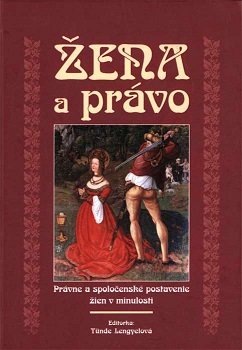Podnikatelské aktivity samostatných žen v Bardejove v prvé polovine 17. století
Economic activities of independent women in Bardejov in the first half of the 17th century
Author(s): Marie Marečková
Subject(s): Gender Studies, Economic history, Culture and social structure , 17th Century
Published by: SAV - Slovenská akadémia vied - Historický ústav SAV
Keywords: independent women; Bardjeov; economic activities; 17th century;
Summary/Abstract: Economically independent women with their own income belonged to the productive group of urban society. I is worthwhile to make use of town accounts books, cloth registers/ books of sold and bought property and testaments to evaluate their achievement in economic sphere in the long run. Independent women in Bardejov in the first half of the 17th century were mostly poor women from the lower classes. Maid servants in private service were members of the household of their employees and were not taxed individually. Their job position was stable and was not prone to suffer from economic depressions. About one quarter of taxed women was daily labourers. They also belonged to the group of economically independent women as they worked for a daily wage and provision. Por¬tion of independent women in comparison with the all tax payers in Bardejov during the first half of the 17th century was decreasing. There is an apparent connection between the economic prosperity of the town and the num¬ber of women active in business or production, especially among tenants, but also among house¬hold owners. It seems that the usual phenomenon in the medieval towns - higher portion of women in the population was not so striking in the early modern period. The number of indepen¬dent women correlated to the economic possibilities of towns. General lack of money hindered business activities of the middle and lower classes in general, but more often affected women rather than men. The analyses of their testaments revealed a complicated system of small loans and borrowings and sporadic use of pawning or selling their perso¬nal belongings, clothes, household equipment and other moveable goods. Well-off women were involved in bigger credit and loan transaction with the town council. The analyses of the cloth registers from the years 1606-1650 showed that domestic cloth produc¬tion was steady or even increasing in the times of economic prosperity. About 200-300 inhabitants of Bardejov were registered as producers of cloth and a quarter of them were women. Nevertheless, independent women did not succeed in penetrating into the group of the biggest cloth investors and merchants. As testaments clearly demonstrate, some of them were rather successful in their business, though. A large number of women were small-scale market-sellers of food at the local market. Independent and married middle class women, according to their testaments, had more pro¬perty than indicated in the tax registers. The property was at their free disposal. The size of the property, that they acquired either by inheritance or own economic activities, determined the choice of husband, everyday life, family life style and education of children. At the same time, the size of the property was decisive in setting a level of personal independence. A higher level of independence ensured that they could freely dispose with their property. The husband and wife were co-owners and the husband needed express consent of his wife for selling their joint proper¬ty. After death of one of a married couple, the other took over the property. If a widow or a wido¬wer married again they were entitled to one third of the property and so was their new partner, whereas all the children from the previous marriage got together the remaining third.
Book: Žena a právo. Právne a spoločenské postavenie žien v minulosti
- Page Range: 196-204
- Page Count: 9
- Publication Year: 2004
- Language: Czech
- Content File-PDF

